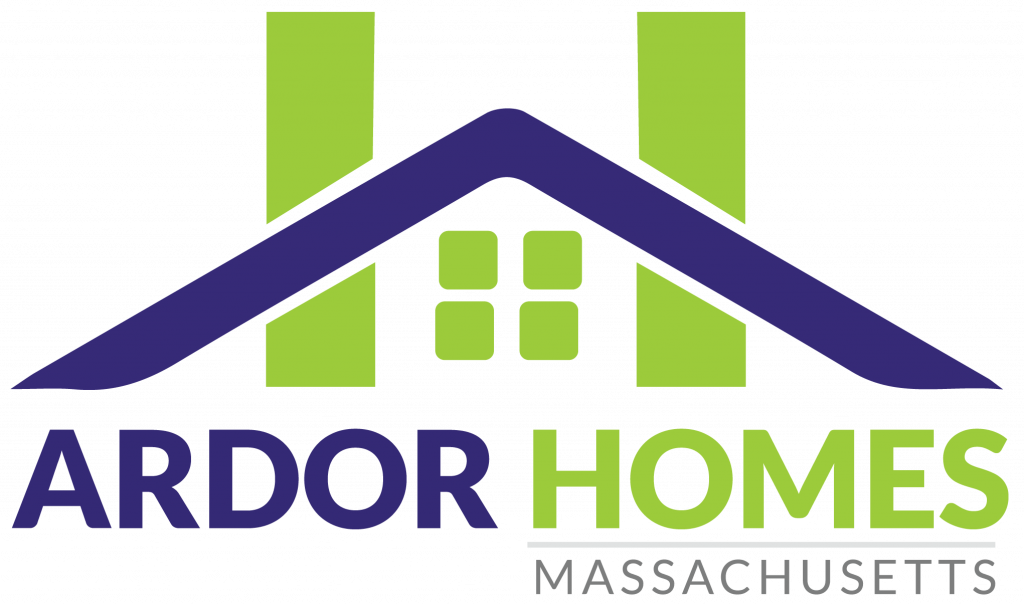
We live in an increasingly consumer-focused economy, which means we have a lot of credit options available to us. This can be great if you know how to use it, but can also be really dangerous if you don’t.
Sometimes emergencies come out of nowhere that put us in financially tough situations. One of the most common debt problems is when people get into credit card debt and can’t pay it back. The worst part is when you are trying to figure out how to get a loan with high debt-to-income ratio because your debt-to-income ratio will be much higher than conventional standards.
What Is a Debt-to-Income Ratio and How Is It Calculated?
Your debt to income ratio (DTI) is a helpful tool that lenders use to determine whether or not you’re likely to be able to repay the amount you loan, so getting your DTI down is a big deal. A high DTI can make it difficult for you to get approved for a loan.
Simply put, it is a ratio that compares your gross monthly debt payments to your gross monthly income. It is basically the amount of your income needed to pay off your debts. The result is expressed as a percentage.
However, It does not include your monthly basic household expenses and bills such as food, utilities (internet, cable, electricity, etc), health insurance premiums, toiletries, groceries, or lifestyle and entertainment.
Ideally, you want to keep your DTI at 43% or less, but if you’re able to increase the amount of money you can put toward debt and lower that percentage below the ideal number, that’s still an improvement.

Two Types of DTI. Lenders consider these two types of DTI when qualifying loan applications:
Front-end DTI. The front-end debt-to-income ratio measures the amount of money you earn compared to your monthly housing costs. For example, say you earn $2,500 per month and have a $1,000 monthly mortgage payment. That would give you a front-end DTI ratio of 50 percent.
Back-end DTI. This is a ratio that compares the total debt payments to a borrower’s income. The back-end DTI will be higher than the front-end DTI because it includes the total of all monthly payments, including principal and interest, rather than just the principal and interest.
It is calculated by dividing the borrower’s monthly gross income pre-tax income by their total monthly debt payments (including home mortgage, auto loans, debt consolidation loans, credit cards, and other personal loans).
For example, if a borrower’s total monthly debt payments are $1,500 and their income is $3,000 per month, then their back-end DTI would be 0.5 or 50 percent:
$1,500 / $3,000 = 0.5
The bank uses this calculation to ensure that the borrower has sufficient income to cover all of their expenses, including their mortgage payment and any other existing debts, such as car loans or credit cards.
Typically, lenders will want to see a DTI ratio of 36% or less, which means that you will be able to handle your minimum monthly payments without falling behind on other loan obligations.
However, some lenders may allow you to qualify for a loan with a higher DTI ratio if they feel confident that you won’t default on your payments due to your financial situation and employment history.
What Is the Debt-to-Income Ratio To Qualify for a Mortgage?

If you’re wondering how to get a loan with high debt to income ratio, then you may be wondering what the DTI should be before you apply for your mortgage. There’s no one answer for everyone, but here are some general guidelines:
- If the total amount of debt obligations is less than 36% of your monthly income, it’s usually fine to apply for any type of mortgage.
- If the total amount of debt obligations is between 36% and 43%, lenders will probably still consider your application if they feel that other factors in your financial situation make you an attractive borrower. However, they’ll likely want an explanation as to why you’ve chosen such a high debt to income ratio over lower ones. This could include having a good credit history or having paid off previous debts on time.
- If the total amount of debt obligations exceed 43%, then most lenders won’t even consider your application unless there are extenuating circumstances that make them feel comfortable lending money at this DTI level (such as collateral).
What Does High Debt-to-Income Mean?
So, how do you get a loan with a high debt to income ratio to buy a house or qualify for a mortgage? First, you need to understand what having a high DTI means.
The higher your DTI, the harder it can be to get a loan.
If you have a DTI of over 40%, lenders will look at your loan application more closely than they do for borrowers with lower DTIs. They are probably thinking “Can this person still pay us?
How do you know if you have a high DTI? You may be wondering what exactly having a high DTI mean. Allow us to explain further.
Consumer debt includes student loans and credit card balances. If you’re paying off these types of debts with money that isn’t going toward other expenses like rent and food—and thus using all available funds just to pay down those debts—then the resulting high DTI could make it hard to get approved for a mortgage loan, housing loan, or auto loan.
To calculate your personal DTI, divide your total monthly payments by gross monthly income (take into account any additional income sources) and then multiply the result by 100%. For example: If $1,000 in monthly payments are made from an individual’s gross monthly income of $3,000 per month (with no other sources), then their personal DTI would be 33%.
How Much Debt Is Too Much

So how do you know if your debt is getting out of hand? The answer depends on many factors, such as your age, your income, and your overall financial situation. But there are also some signs that it might be time to pay off your debt:
You have trouble making minimum payments on time every month. If you find yourself late on payments or barely able to make them at all, it’s probably time to start paying down that balance.
You have high-interest rates or fees on your credit cards and loans. If your balance is relatively small but the interest rate is high, then paying off the balance might not be worth it because of how much money you would spend on interest over time.
Your income is less than your current debt payments. You may want to consider cutting back on spending or increasing income before taking on more debt.
There’s only one way out of debt for you — bankruptcy. There are many different options available for dealing with debt; bankruptcy should never be considered unless all other avenues have been exhausted and there isn’t any way out except through filing bankruptcy.
Is it a good idea to get a loan with a high debt to income ratio?
Having a high debt to income ratio means lenders may be less willing to give you a loan or may ask you to pay a higher interest rate for the loan you are taking. Simply put, this would cost you more money. But you may be surprised to learn that there are ways to get a loan if your monthly debt obligations are high. Here are some options you can consider.
#1 Get an FHA loan
If you have a high debt to income ratio, consider an FHA loan. The U.S. Department of Housing and Urban Development (HUD) established the Federal Housing Administration (FHA) to back FHA loans.
FHA loans require a down payment of 3.5% and a credit score of 580 or higher. They are ideal for first-time homebuyers who don’t have enough savings to make the 20% down payment that most conventional lenders require as well as those with less than perfect credit scores because they allow for lower interest rates and better terms than other conventional mortgages.
One thing to keep in mind: If you take out an FHA loan and then sell your home within three years or refinance within seven years under certain conditions, the HUD requires all mortgages on single-family homes purchased with their assistance after July 29th, 2009 to be assumable by future buyers (or refinancers). This means that when you sell your home or refinance your mortgage into another lender’s program, any existing borrowers can essentially “take over” from you—and carry on paying off the rest of your loan balance at current market rates!
#2 Get a co-signer
If you have a co-signer, you can use their good credit to help land you a loan. They will be equally responsible for the loan and accept legal responsibility if you fail to repay it.
You might not want to ask your parents and close relatives and friends for help when it comes to your financial situation. If they are willing and able (and if the lender agrees), then this could be an excellent way for you to be able to get a loan even with a high debt to income ratio.
#3 Shop around for lenders
One of the best and most popular ways to get a loan with a higher debt to income ratio is by shopping around for lenders. You should talk to multiple lenders and get quotes from them so you have an idea of what rates different lenders are offering. You can also talk to a mortgage broker who has access to dozens of different lenders or even consider talking to a financial advisor for help finding the right loan for your situation.
One other thing that can make it easier is if you look at variable rates instead of fixed ones, or interest-only loans instead of principal and interest loans. Interest-only loans are more expensive but they allow you more flexibility when it comes time for payments because they don’t require any principal payments until after the term ends (usually 20 years). Credit unions are another option worth considering; they tend to offer lower interest rates than banks or online lenders like LendingTree because they’re nonprofits so there are fewer overhead costs involved in running them!
#4 Consider debt consolidation
A more advanced method of lowering your DTI is to consolidate all of your credit card debts into one loan with a lower interest rate. This works best if you have multiple credit cards, but still have enough income to make the payments every month. Just be sure that you can pay off the new loan on time and don’t fall back into old habits of spending more than you should. In order to get a lower interest rate on a consolidation loan, improve your credit score by paying off any other outstanding debts and making all of your payments on time for several months in a row.
#5 Lower your total debts
- Pay off high-interest debt first. High-interest rates will eat away at your debt and make it harder to pay off in full. So, while you’re paying down the debts with lower interest rates, focus on paying more than the minimum monthly payments on those with higher ones.
- Get a lower APR. This one is simple: look into refinancing your loans or getting a new loan to get a lower APR and save money on interest over time!
- Pay more than the minimum monthly payment. Not only is this better for your credit score and qualify for better loans, but it also makes sure you can get out of debt faster by paying down more each month.
In a nutshell
While having a high debt-to-income ratio can make it tougher to get approved for loans or credit cards, it’s not impossible. However, it is still best to look for ways to lower the ratio if possible so you can get better loan terms, lower interest rates, and get approved faster. Here are some pointers to help you achieve your dream how and be approved for a housing mortage:
- Put a hold on loan payments and reduce the amount of interest you are paying. If you do this, make sure to get permission from the lender before doing so.
- If you have a second job or other sources of income, it will be easier for you to make more money each month.
- Talk with a financial advisor and mortgage lenders who might have some more ideas about how exactly where else could help lower your DTI.

In her 25-year career, Steph Wilkinson has been involved in the acquisition, marketing and sales of over $3 Billion dollars of residential real estate. A number of years ago, Steph transitioned into Brokerage Leadership for National real estate brands and tech start-ups. She has served as a Business Strategist for real estate agents and brokerages alike and is also a real estate coach and trainer. In her new role with the Iconic Team, Steph will be responsible for the growth of the team and will be working with all of our agents to increase their productivity and bottom line.




